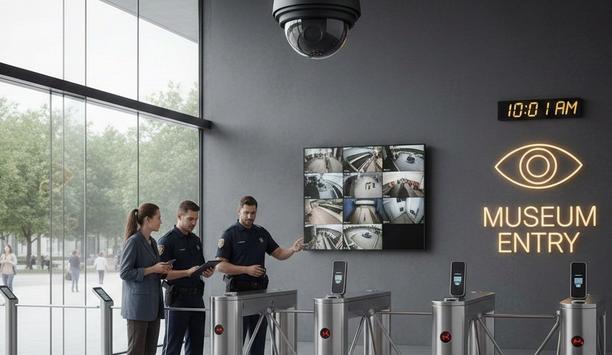Check Out Our Special Report On Casino Security
What Are The Security Industry’s Newest Buzzwords?
- Security buzzwords evolve with tech changes, reflecting industry trends and market shifts.
- Expert Panel identifies new buzzwords indicative of changing security technology landscape.
- Industry language highlights technological advances and shifts in security market dynamics.
Editor Introduction
Changes in our industry’s technologies are reflected in the language we use. Over the years, more than one industry trend has been tied to associated buzzwords – for better or worse. As the technologies change, so does the language. We asked this week’s Expert Panel Roundtable: What are the industry’s newest “buzzwords” and what do they reflect about the changing market?
The Industrial Internet of Things (IIoT) remains an important topic for the security industry in 2017. While some companies are still building strategies to harness the promise of the Internet of Things (IoT), many industrial organizations are putting real solutions in place and maximizing operations by utilizing the IoT. As applications of this connected infrastructure move from ideas to real-life implementations, an understanding of how it integrates physical and virtual and introduces new and emerging cybersecurity threats is crucial for properly protecting businesses. The IIoT applies connectivity and automation to the commercial space, integrating cyber systems with physical systems like building management, video surveillance and physical access control. Within this ecosystem, a compromised device can be used to disrupt other devices and/or enterprise systems, thereby giving rise to cascading threats. Organizations should ensure that procedures for system update management and IIoT system access are central to their cybersecurity plans.
One of the main buzzwords emerging in today's market is Intelligence as it relates to artificial or business intelligence, both of which will have a huge impact on the market in the coming years. Security leaders are looking for solutions that offer far more than simply tools to keep assets safe and secure. They want solutions that also go further to offer business intelligence insights using existing technology, such as video data or access management. The emerging security robotics market is poised to provide this kind of intelligence to managers, as the data gathered through perimeter patrol and guarding services can be used to streamline operations. Artificial intelligence, in turn, can allow robots to learn from the environment around them to better navigate obstacles, search for and address potential threats, and offer better insight into business operations.
End-to-End Security is a buzzword reflecting how cyber threats are increasing and the importance of “the security of security systems,” especially for companies operating in the critical national infrastructure. Convergence has been a “hot topic” for years, but has it really happened? In order to create true end-to-end security solutions, IT and physical security best practices need to be combined. And in order to implement those solutions, IT and security departments within organizations need to cooperate. The need for cloud-based solutions is rising in the security industry, too. When implementing this kind of solutions, however, a discussion should take place about the importance of security on one hand and convenience and usability on the other.
Some buzzwords are Metadata, Business Intelligence, AI (Artificial Intelligence), Deep learning, Cognitive Computing and Neural Networks. There are a lot of people who don’t know that metadata is inter-linked with the Internet of Things (IoT) and business intelligence. This is the continuing expansion of the physical security industry with IT technology and its ongoing innovations. IoT assimilates input from all kinds of sensors and the sensor metadata is now possible to tag, making it searchable as business intelligence with video verification. Machine Learning is when algorithms are written so they learn on their own. One example of machine learning is based on cross communication within the system, to model the human brain; this is called Deep Learning. “Connected deep learning nodes” refer to “neural networks,” which can provide an output. Over time the neural network can “learn” from these different categorizations and biased weighting to produce the desired output.
Editor Summary
A buzzword is defined as an item of jargon that is fashionable at a particular time or in a particular context. Buzzwords have a lifespan determined by changing technologies and continuing innovation in the environments they are used to describe. As go the technologies, so go the buzzwords. Our Expert Panel Roundtable serves up a thought-provoking range of terms to consider this week, all of them reflecting a changing marketplace brimming with innovation.
- Related categories
- Access control controllers
- Access control software
- Electronic lock systems
Expert commentary
Security beat
The Key To Unlocking K12 School Safety Grants
DownloadHoneywell GARD USB Threat Report 2024
DownloadPhysical Access Control
DownloadThe 2024 State Of Physical Access Trend Report
DownloadThe Security Challenges Of Data Centers
DownloadKentixONE – IoT Access And Monitoring For Data Centers
Climax Technology HSGW-Gen3 Modular Smart Security Gateway
Delta Scientific DSC50 ‘S’ Barrier: Portable, Crash-Rated Vehicle Mitigation Solution























